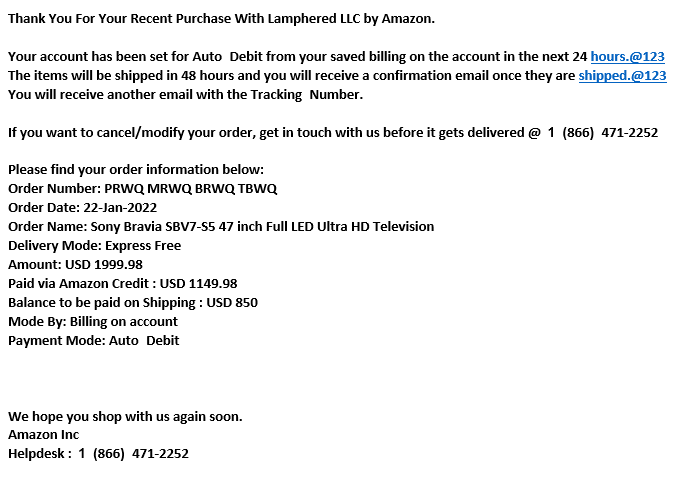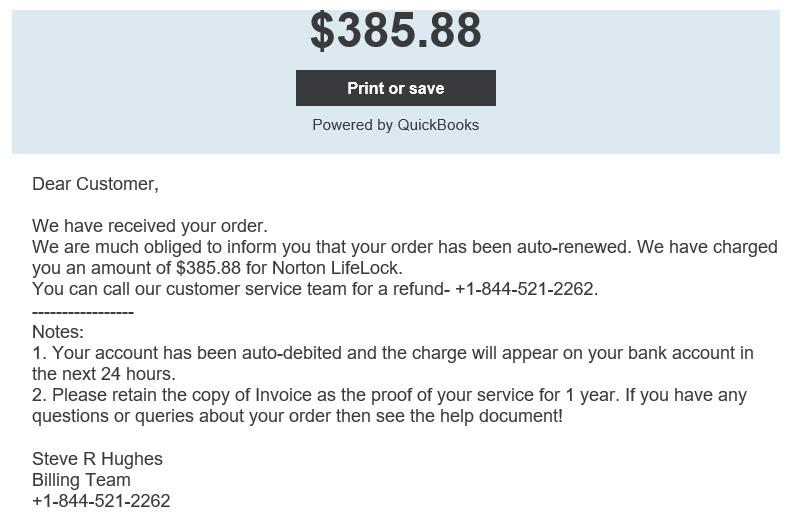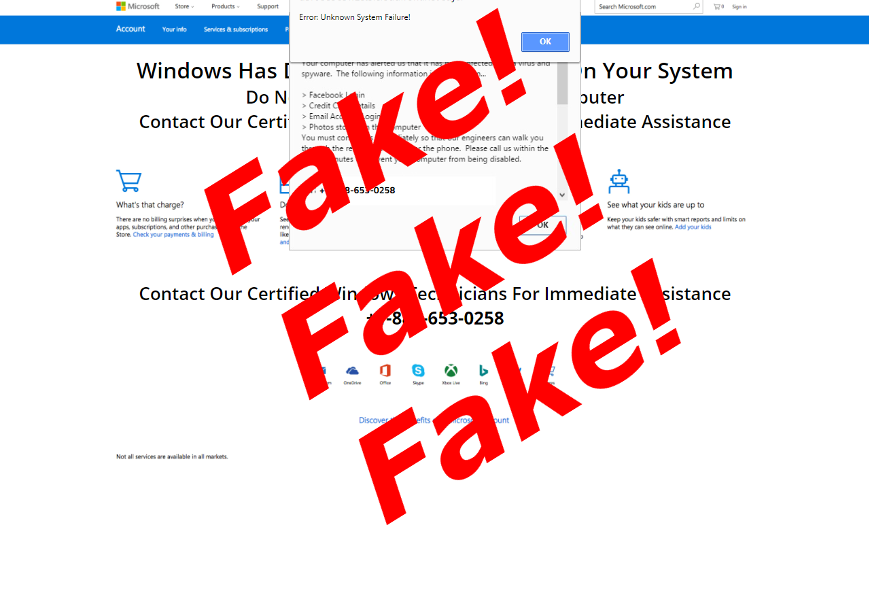Table of Contents
There are two common scams today:
You get an email saying you purchased something and if you want more information or a refund, you must call a number. Once you contact them, they convince you to open up your bank account becasue they "refunded" you too much and give them everything in it. See below:
Fake Amazon Invoice

Fake Norton Invoice

The second way is to suddenly show a fake website as you browse the Internet saying you are infected and you must call a number to fix it. From there they convince you to open up your bank account and give them everything in it. See below:

Four things to do, depending on how far it went:
- Option 1 - Ignore it. If it's an email, delete it. If it's a website and you can't exit, reboot the computer and do not restore the webpage when your computer restarts, if asked. If you can't restart, force the computer to shut down by either pressing and holding the power button for 7 seconds, or pull the power plug.
- Option 2 - If you called the number but did not allow them to log into your computer remotely AND you did not give them any credit card or banking information, hang up and see step 1. If they keep calling, ignore them. They will move on.
- Option 3 - If you called the number AND allowed them into your computer, hang up immediately and force shutdown the computer by holding the power button down for 7 seconds or unplugging it. Bring in the computer for cleaning. Do not start it.
- Option 4 - If you called the number, allowed them into your computer, AND gave them banking or credit card information, hang up the phone, shut down the computer and call whatever financial institution you gave the scammers IMMEDIATELY. If you can't shut down, pull the power plug. Bring in the computer.
We have found credit card companies freeze the transaction almost immediately. Banking institutions pretty much let all transactions take place unless you call them fast enough to stop it. We don't understand how they can allow a complete emptying of an account without some sort of approval first.



